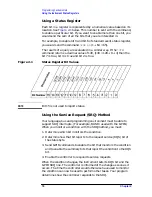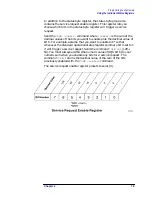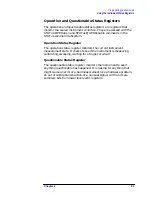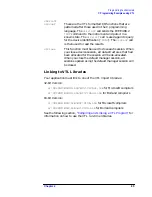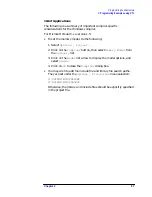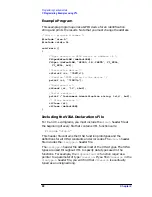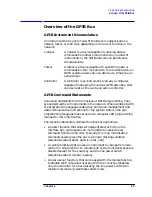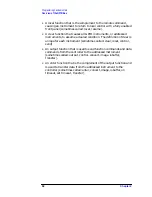
82
Chapter 2
Programming Fundamentals
Using the Instrument Status Registers
The standard event status register is used to determine the specific
event that set bit 5 in the status byte register. To query the standard
event status register, send the command
*ESR?
. The response will be
the decimal sum of the bits which are enabled (set to 1). For example, if
bit number 7 and bit number 3 are enabled, the decimal sum of the 2
bits is 128 plus 8. So the decimal value 136 is returned.
In addition to the standard event status register, the standard event
status group also contains a standard event status enable register. This
register lets you choose which bits in the standard event status register
will set the summary bit (bit 5 of the status byte register) to 1. Send the
*ESE <number>
command where
<number>
is the sum of the decimal
values of the bits you want to enable. For example, to enable bit 7 and
bit 6 so that whenever either of those bits is set to 1, the standard event
status summary bit of the status byte register will be set to 1, send the
command
*ESE 192
(128 + 64). The command
*ESE?
returns the
decimal value of the sum of the bits previously enabled with the
*ESE
<number>
command.
The standard event status enable register presets to zeros (0).
Summary of Contents for E4406A VSA Series
Page 4: ...4 ...
Page 59: ...59 2 Programming Fundamentals ...
Page 124: ...124 Chapter2 Programming Fundamentals Using the LAN to Control the Analyzer ...
Page 125: ...125 3 Programming Examples ...
Page 164: ...164 Chapter3 Programming Examples Using Java Programming Over Socket LAN ...
Page 165: ...165 4 Programming Command Cross References ...
Page 379: ...379 6 Error Messages ...
Page 412: ...412 Chapter6 Error Messages Error Message Descriptions ...







